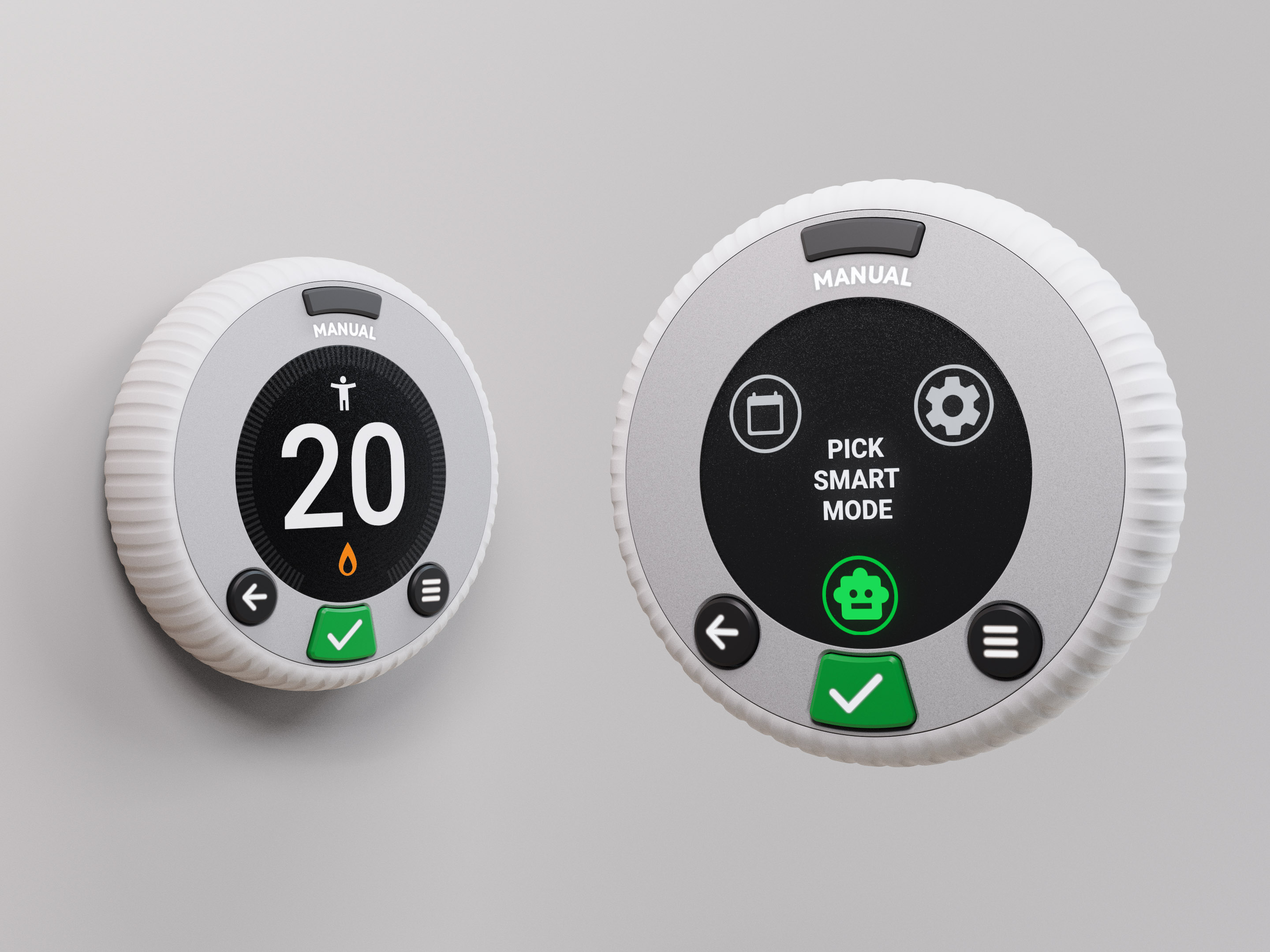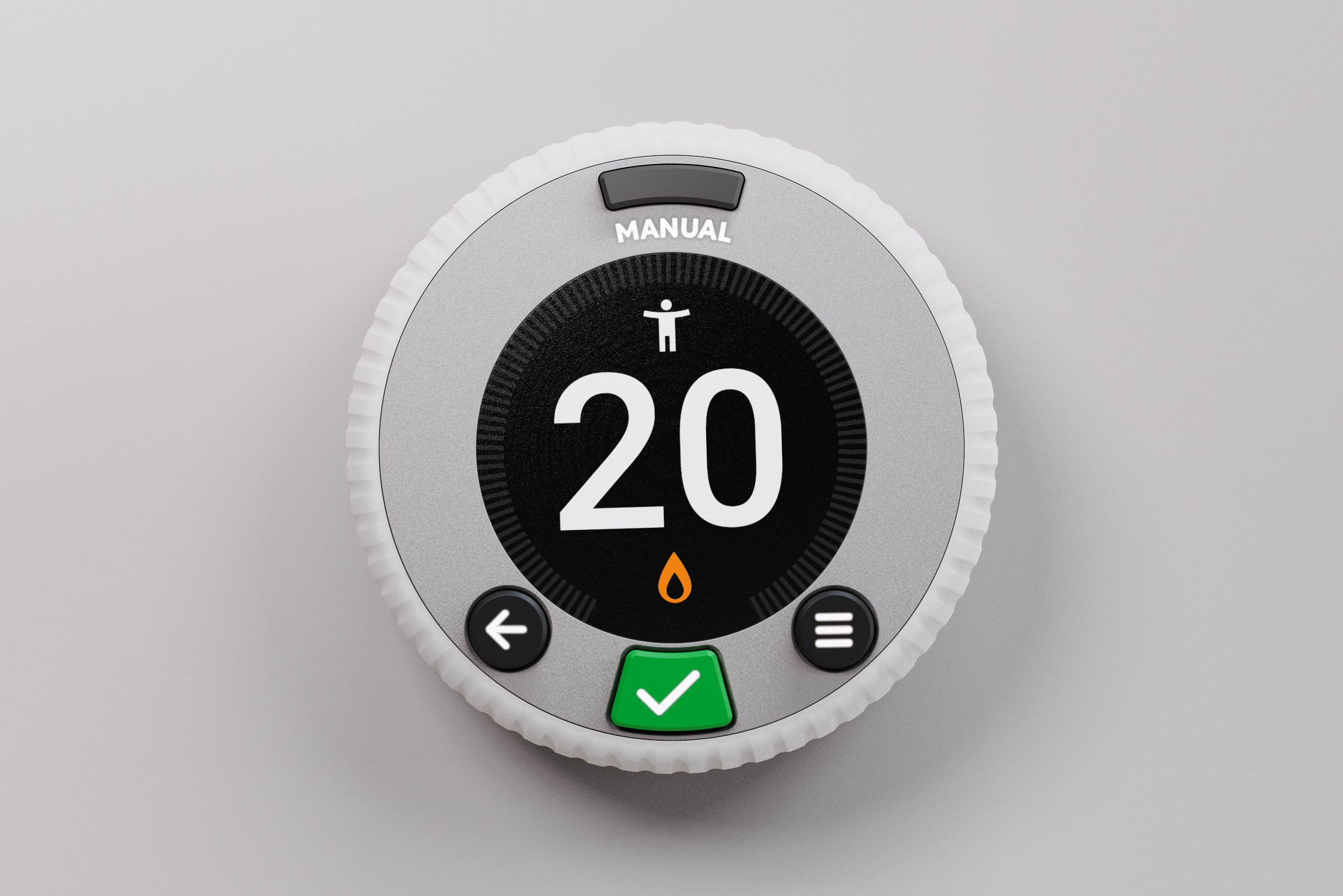Accessible Smart Heating Controls
Improving the usability of residential smart heating control systems, including addressing users varying accessibility and learn-ability requirements. In order to increase their adoption, ease and effective use throughout the population.
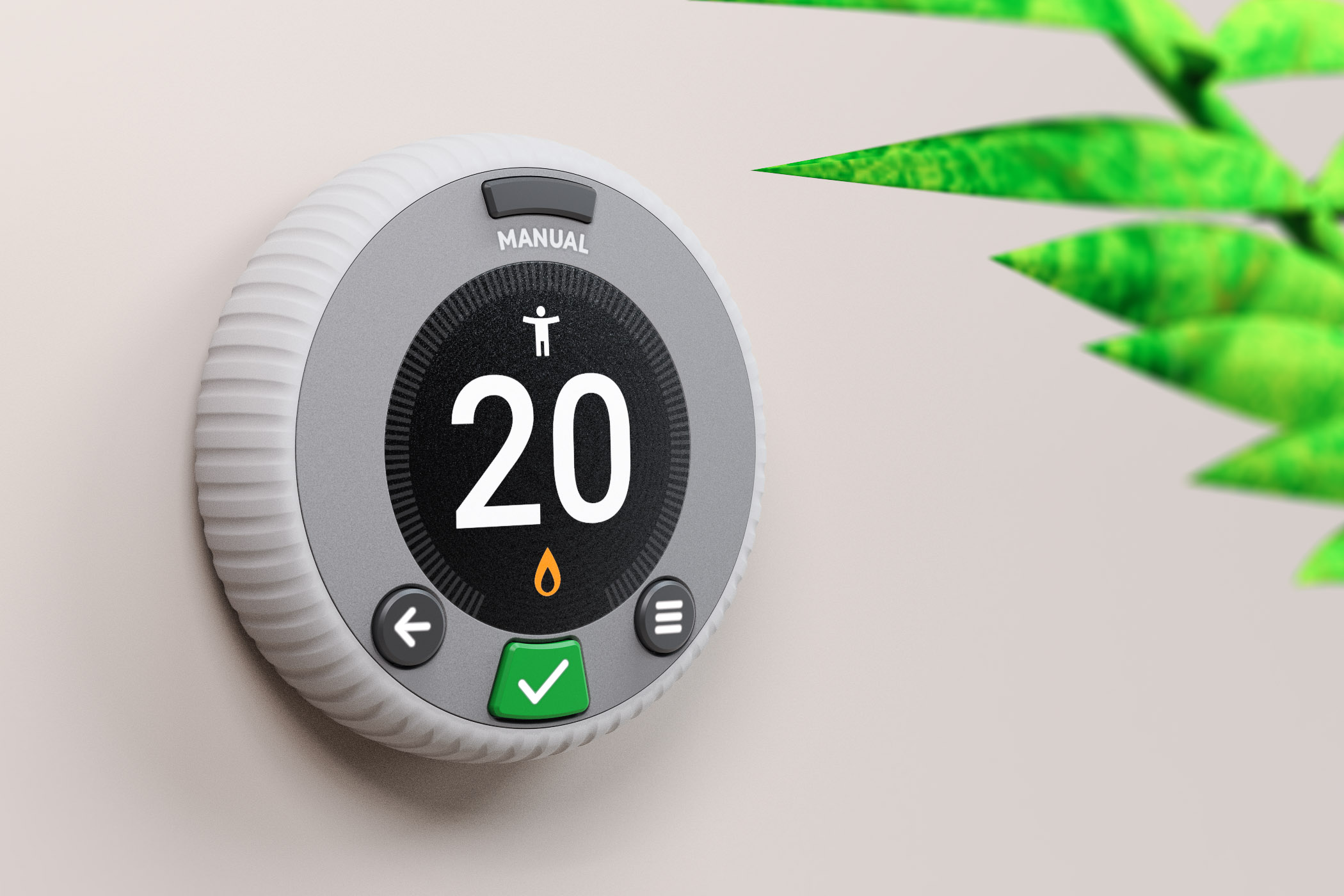
Accessible Smart Heating Controls
Improving the usability of residential smart heating control systems, including addressing users varying accessibility and learn-ability requirements. In order to increase their adoption, ease and effective use throughout the population.
The Problem
Domestic heating controls provide the interface with which users can interact with their system in order to achieve specific requirements such as optimum thermal comfort, financial savings, or reduced environmental impact. The advent of smart heating controls provides an opportunity to address and optimize functionality for almost every user’s specific requirements. However, the lack of adoption and appropriate use of the technology has meant these possibilities are yet to be fulfilled.
Context
The automated and less centralized nature of smart IOT (internet of things) heating systems has to lead to a far more complicated and less tangible design model for the operation and regulation of temperature within the home. As well as this IOT systems intrinsically involve conflicting interactions between devices.
The introduction of cloud-based servers and multiple new interfaces ( including digital controls and mobile-based apps ) to an already complicated design model has increased the disconnect between the average user’s mental model, and the operational design model of the system.
Sketch Ideation

Device Flows
Demonstration of a user interaction flow with the control.
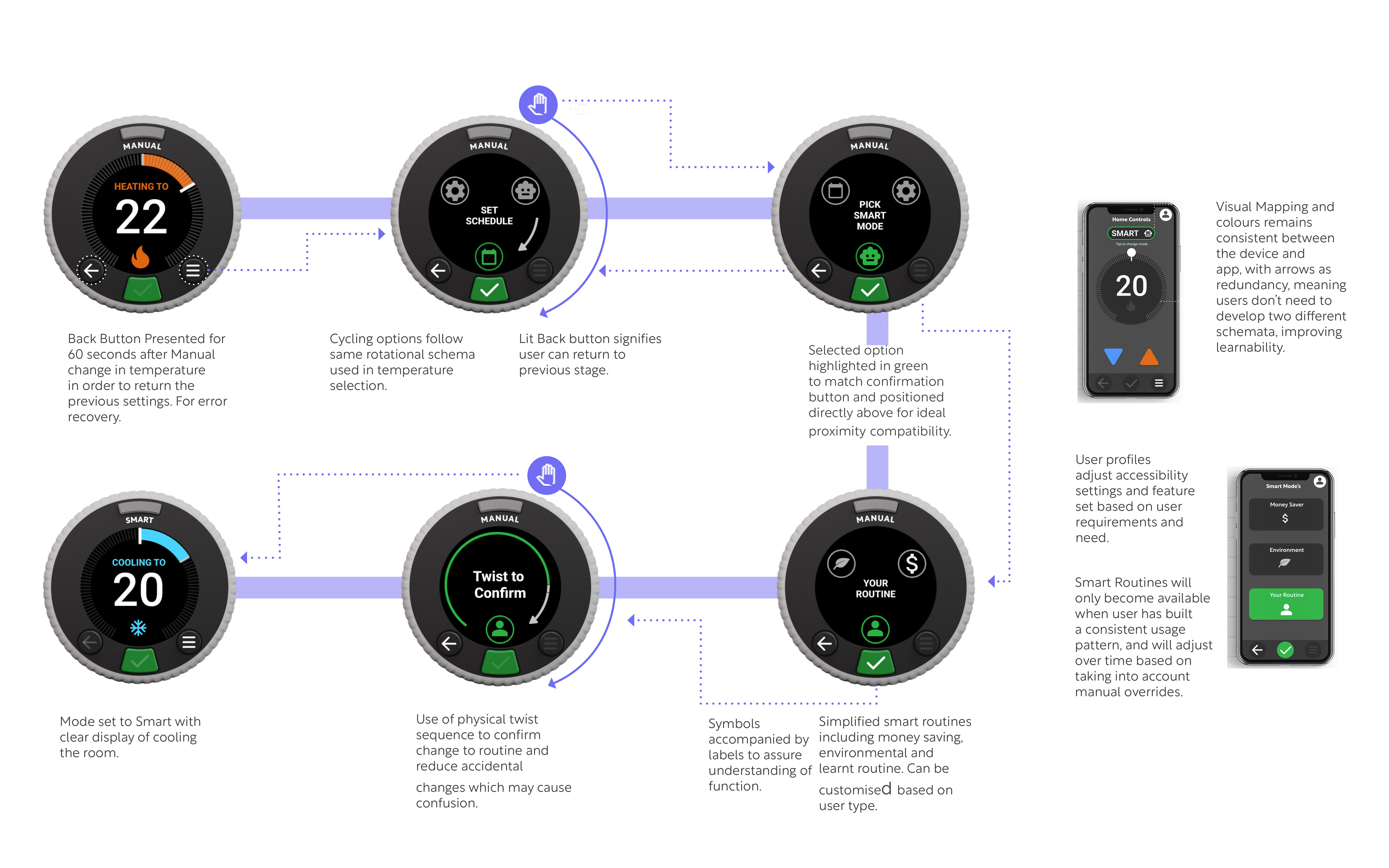
Usability Focused Features
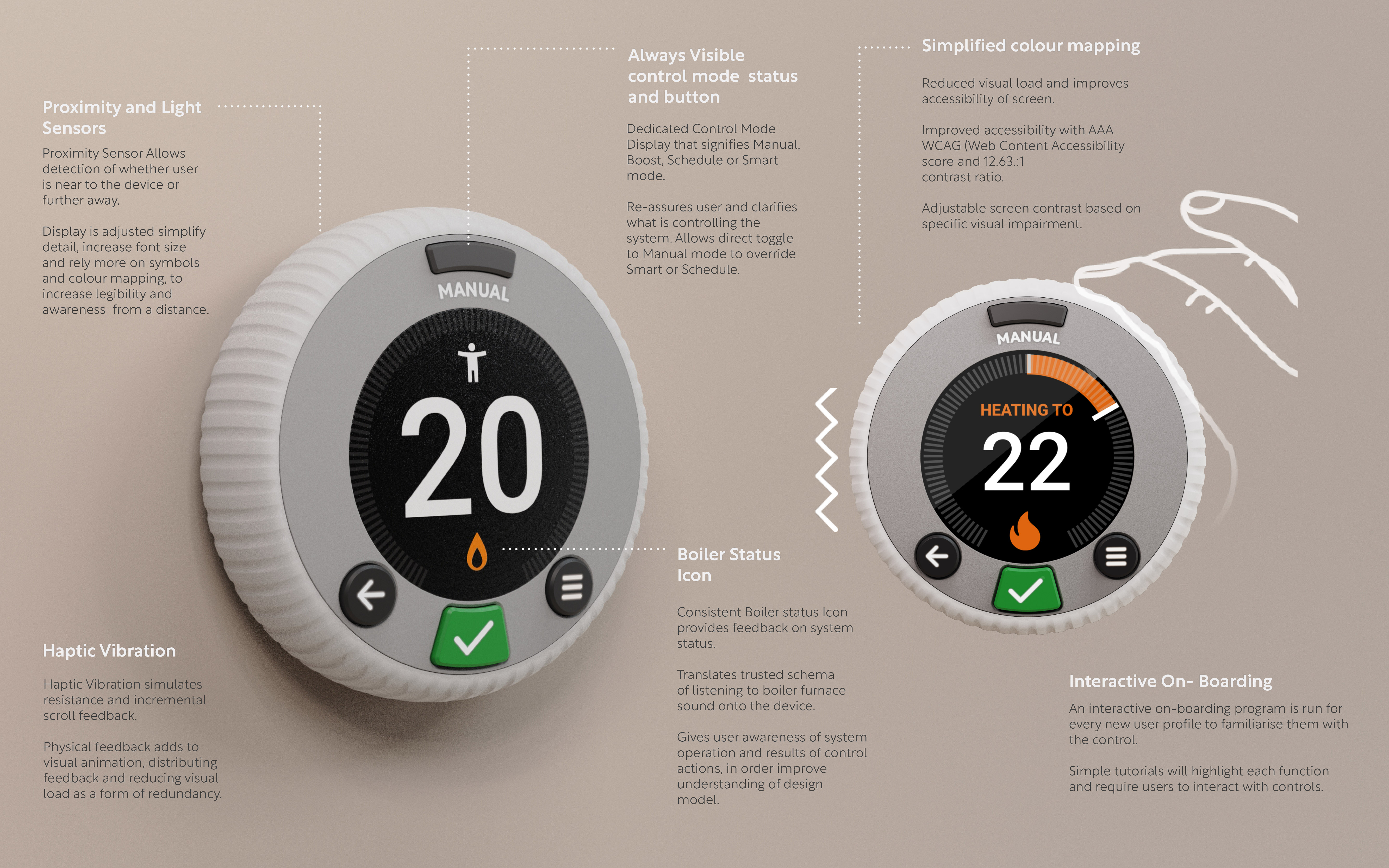
Normative Analysis and comparison
Key Usability Heuristics were considered and used to inform 6 criteria which were used to form a Normative Analysis Framework.
Normative scores could then be used to compare the redesigned product with current market available options.

Personal Evaluation
Although the redesign has performed well in the normative evaluation this value is definitely not a reliable reflection of usability when used on its own. Although the attributes are related closely to the design intention, the normative scores are purely subjective and rely on varying levels of evidence for each product.
This re-design has theoretically improved the Usability of the physical smart thermostat control and app. With the he final outcome improving learn-ability and accessibility among under- engaged user groups such as older adults. As a result it could prove to encourage better engagement with smart heating systems and help a range of users achieve a heating experience that’s aligned to there personal motivations and context.

